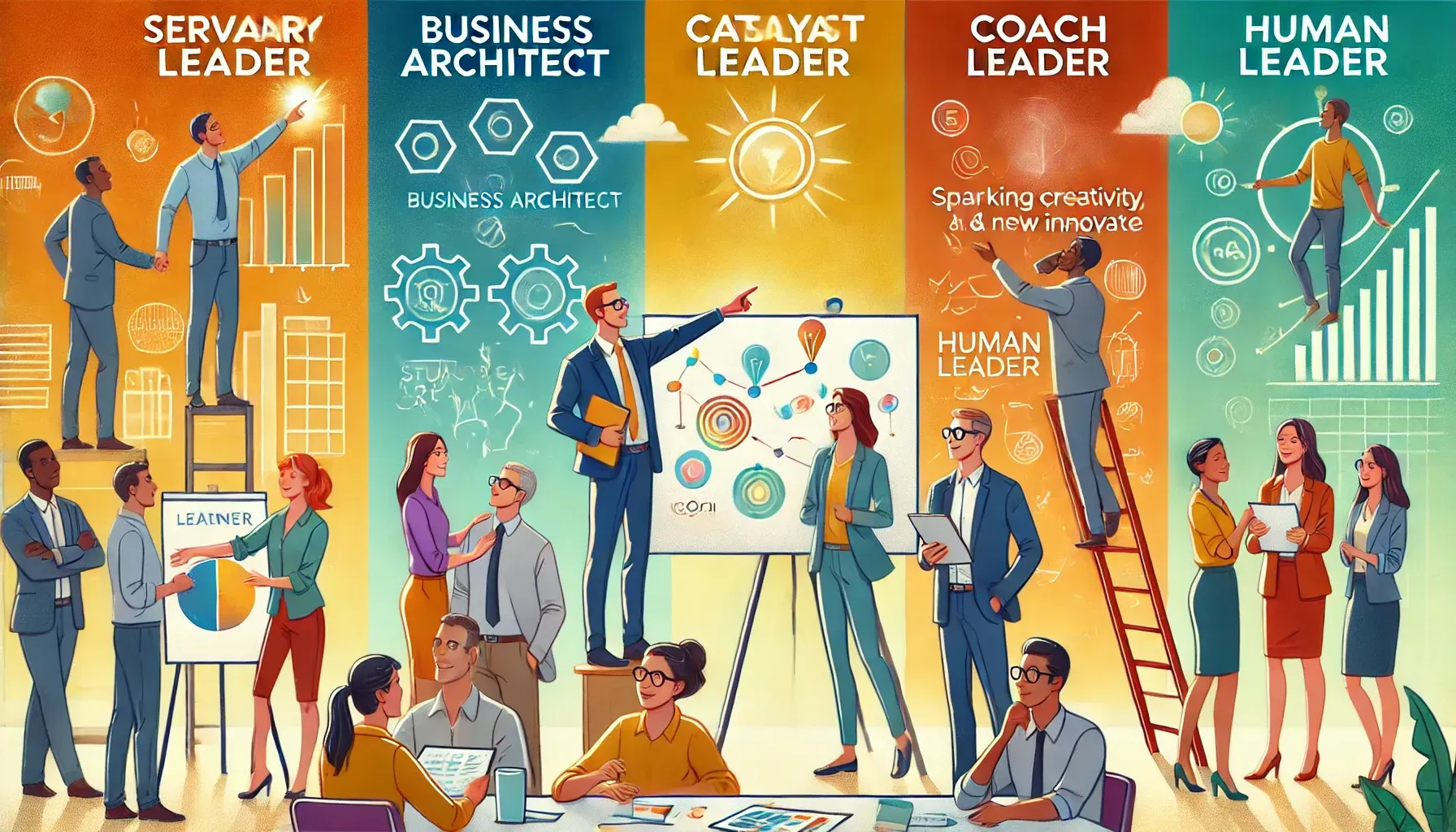Servant Leader Roles
Cathie Leimbach • August 6, 2024

Leaders who serve their organization and its people are breaking away from the mold of the autocratic and controlling boss. They are engaging and empowering others to build trust and enhance both satisfaction and productivity in the workplace.
Let's look at five roles of these servant leaders:
- Visionaries: Servant leaders articulate a clear vision that inspires and aligns the team. By sharing the organization's mission and goals, they provide direction and purpose, motivating employees to work towards a common objective.
- Business Architects: They design and structure the organization to ensure that processes, resources, and systems support the team's efforts. This involves strategic planning and creating an environment where innovation and efficiency thrive.
- Catalysts: Servant leaders act as catalysts for change by encouraging new ideas and fostering a culture of continuous improvement. They empower employees to take initiative and drive positive transformation within the organization.
- Coaches: They invest time in mentoring and developing their team members. By providing guidance, feedback, and opportunities for growth, they help individuals enhance their skills and advance their careers.
- Humans: Above all, servant leaders demonstrate empathy and genuine concern for their employees' well-being. They build strong relationships, showing that they value and care about each person's contributions and overall happiness.
Through these five roles, servant leaders create a thriving, dynamic, and supportive workplace where both organizations and individuals flourish.

In Erica Dhawan’s book, Get Big Things Done, she defines Connectional Intelligence as the ability to combine knowledge, networks, and relationships to drive meaningful results. In today’s busy workplace, it’s not just what you know—it’s how well you connect that turns good ideas into big outcomes. Strong Connectional Intelligence within a team strengthens workplace morale and productivity by impacting four key attributes of high-performance cultures: Value Visibly – People perform better when they know their contributions matter. Leaders who highlight strengths, acknowledge effort, and celebrate progress create a culture where great work becomes contagious. Communicate Carefully – In an age of nonstop messages, clarity is a competitive advantage. Thoughtful communication reduces confusion, prevents conflict, and ensures that everyone moves forward with shared understanding. Collaborate Confidently – Connectional Intelligence flourishes when people feel empowered to contribute. Confident collaboration means inviting diverse perspectives, leveraging individual superpowers, and creating space for smart problem-solving. Trust Totally – Trust is the anchor of all high-performing teams. When leaders show reliability, transparency, and empathy, people take risks, share ideas, and stay aligned toward common goals. Connectional Intelligence helps teams innovate faster, break down silos, and accomplish what truly matters. Want to learn more? Visit Erica Dhawan’s website to explore her full body of work and deepen your understanding of Connectional Intelligence.

When people hear “psychological safety,” they often imagine a workplace where everything feels easy and conflict-free. But that’s not what true psychological safety is — and it’s not what high-performing teams need. As leadership expert R. Michael Anderson points out, work and life include tough days, unexpected problems, and moments that stretch us. A psychologically safe workplace doesn’t remove those realities. Instead, it gives people the confidence and support to face them. A safe workplace is one where employees can struggle without fear of embarrassment… try new skills without being put down… ask questions, make mistakes, and keep moving forward. It’s a place where people know their leader is behind them — not by preventing discomfort, but by helping them learn through it. Psychological safety isn’t about coddling or creating a predictable bubble. Real safety looks like this: · You may hear difficult feedback, but it helps you grow. · You are encouraged to take risks, and supported when you slip. · You are stretched beyond your comfort zone, and guided along the way. When leaders create this balance — support plus stretch — people build resilience, confidence, and higher performance. To explore more of these ideas, visit R. Michael Anderson's website .
